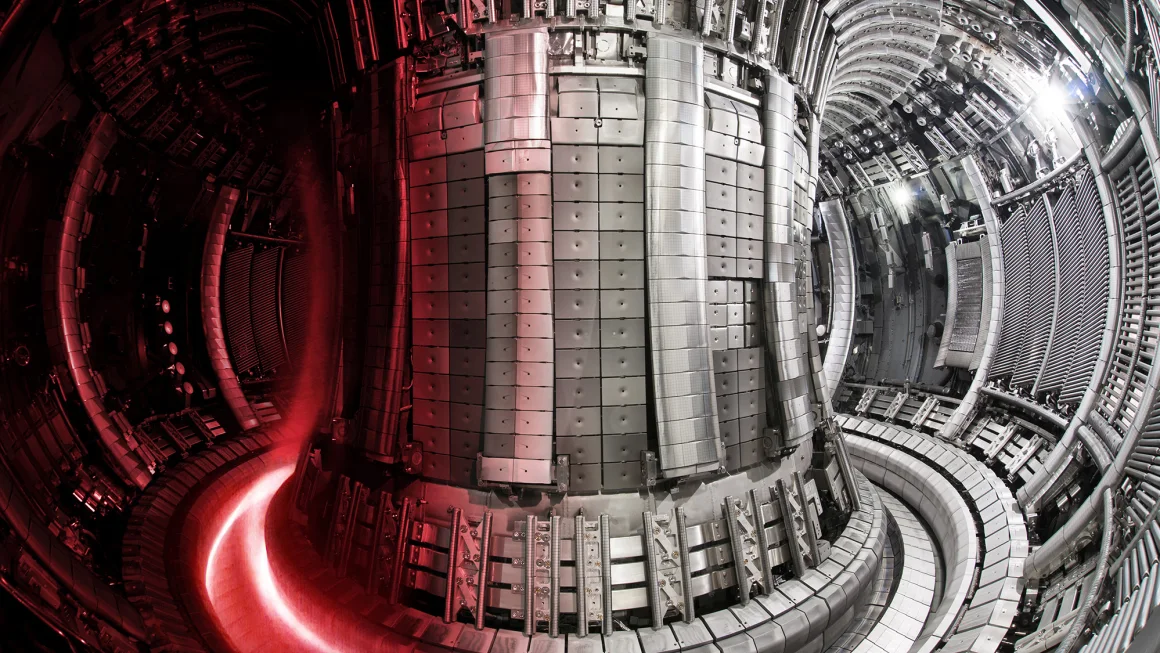Scientists say they can use AI to solve a key problem in the quest for near-limitless clean energy
by Admin

Scientists pursuing fusion energy say they have found a way to overcome one of their biggest challenges to date — by using artificial intelligence.
Nuclear fusion has for decades been hailed as a near-limitless source of clean energy, in what would be a game-changing solution to the climate crisis. But experts have only achieved and sustained fusion energy for a few seconds, and many obstacles remain, including instabilities in the highly complex process.
There are several ways to achieve fusion energy, but the most common involves using hydrogen variants as an input fuel and raising temperatures to extraordinarily high levels in a donut-shaped machine, known as a tokamak, to create a plasma, a soup-like state of matter.
But that plasma needs to be controlled and is highly susceptible to “tearing” and escaping the machine’s powerful magnetic fields that are designed to keep the plasma contained.
On Wednesday, researchers from Princeton University and the Princeton Plasma Physics Laboratory reported in the journal Nature they found a way to use AI to forecast these potential instabilities and prevent them from happening in real time.
The team carried out their experiments at the DIII-D National Fusion Facility in San Diego, and found that their AI controller could forecast potential plasma tearing up to 300 milliseconds in advance. Without that intervention, the fusion reaction would have ended suddenly.
The findings are “definitely” a step forward for nuclear fusion, said Egemen Kolemen, a professor of mechanical and aerospace engineering at Princeton University and an author on the study.
“This is one of the big roadblocks — disruptions — and you want any reactor to be operating 24/7 for years without any problem,” Kolemen told CNN. “And these type disruption and instabilities would be very problematic, so developing solutions like this increase their confidence that we can run these machines without any issues.”
Fusion energy is the process that powers the sun and other stars, and experts have been trying for decades to master it on Earth. It is achieved when two atoms that usually repel are forced to fuse together. It’s the opposite of nuclear fission — the type widely used today — which relies on splitting atoms.
Scientists and engineers near the English city of Oxford earlier this month set a new nuclear fusion energy record, sustaining 69 megajoules of fusion energy for five seconds, using just 0.2 milligrams of fuel. That’s enough to power roughly 12,000 households for the same amount of time.
But that experiment still used more energy as input than it generated. Another team in California, however, managed to produce a net amount of fusion energy in December 2022, in a process called “ignition.” They have replicated ignition three times since.
Despite the promising progress, fusion energy is a long way from becoming commercially available – well beyond the years that deep, sustained cuts to planet-warming pollution are required to stave off worsening impacts of the climate crisis.
Scientists say those pollution cuts are required this decade.
CNN’s Rachel Ramirez contributed to this report.
Scientists pursuing fusion energy say they have found a way to overcome one of their biggest challenges to date — by using artificial intelligence. Nuclear fusion has for decades been hailed as a near-limitless source of clean energy, in what would be a game-changing solution to the climate crisis. But experts have only achieved and sustained…
Recent Posts
- Liverpool ends 15-year curse with statement win over Real Madrid
- The TSA-approved hack that allows travelers to bring a bottle of water through airport security
- Подводный WiFi, аквапонные фермы: как морские техностартапы привлекают инвесторов
- “Подводный интернет”: эта женщина может подключить беспроводную сеть на 3-километровой глубине
- Inside the wild world of Osaka’s dangerous, adrenaline-fueled float festivals